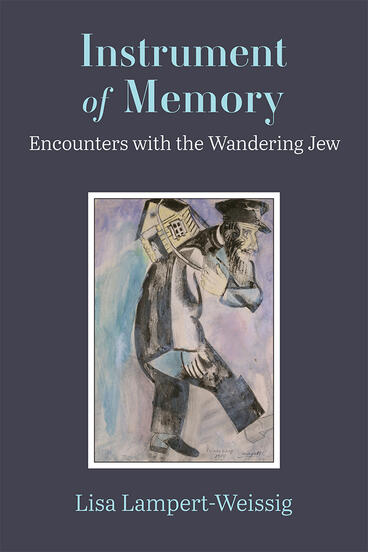Instrument of Memory
Encounters with the Wandering Jew
Reimagining the Wandering Jew legend and the curse of immortality in centuries of Jewish and Christian art
Description
How can immortality be a curse? According to the Wandering Jew legend, as Jesus made his way to Calvary, a man refused him rest, cruelly taunting him to hurry to meet his fate. In response, Jesus cursed the man to wander until the Second Coming. Since the medieval period, the legend has inspired hundreds of adaptations by artists and writers. Instrument of Memory: Encounters with the Wandering Jew, the first English-language study of the legend in over fifty years, is also the first to examine the influence of the legend’s medieval and early modern sources over the centuries into the present day. Using the lens of memory studies, the work shows how the Christian tradition of the legend centered the memory of the Passion at the heart of the Wandering Jew’s curse. Instrument of Memory also shows how Jewish artists and writers have reimagined the legend through Jewish memory traditions. Through this focus on memory, Jewish adapters of the legend create complex renderings of the Wandering Jew that recognize not only the entanglement of Jewish and Christian memory, but also the impact of that entanglement on Jewish subjects. This book presents a complex, sympathetic, and more fully realized version of the legend while challenging the limits of the presentism of memory studies.
Lisa Lampert-Weissig is Professor of English Literature and Comparative Medieval Studies and Jerome and Miriam Katzin Chair of Jewish Civilization at the University of California, San Diego.
Reviews
“With its new analysis of a well-known and enduringly popular legend and new identifications of Jewish literary and artistic re-imaginings of it, Instrument of Memory will be an important intervention in both literary criticism and Jewish studies. It also provides new insights relevant to our understanding of nationalism and antisemitism, subject areas in which the author has published other important work. For medievalists, it newly demonstrates how medieval Christian tropes and ideas provided the historical infrastructure for antisemitisms of later periods, which is an issue of concern across disciplines.”
- Debra Strickland, University of Glasgow
“Lisa Lampert-Weissig’s volume significantly contributes to the rich and varied scholarship on the Wandering Jew. With her deep knowledge of European languages and cultures she beautifully reads texts from the Middle Ages through the nineteenth and the twentieth century almost to our own time, focusing the powerful lens of memory studies on the cultural interactions woven into the art of Jewish and Christian authors and artists. Well worth reading and teaching!”
- Galit Hasan-Rokem, The Hebrew University of Jerusalem

